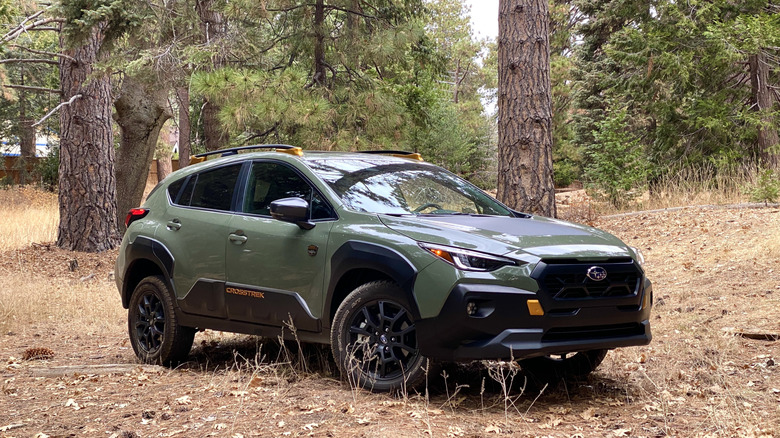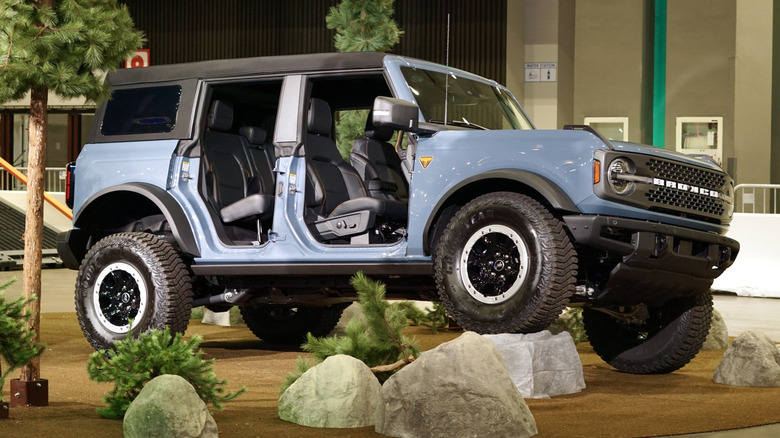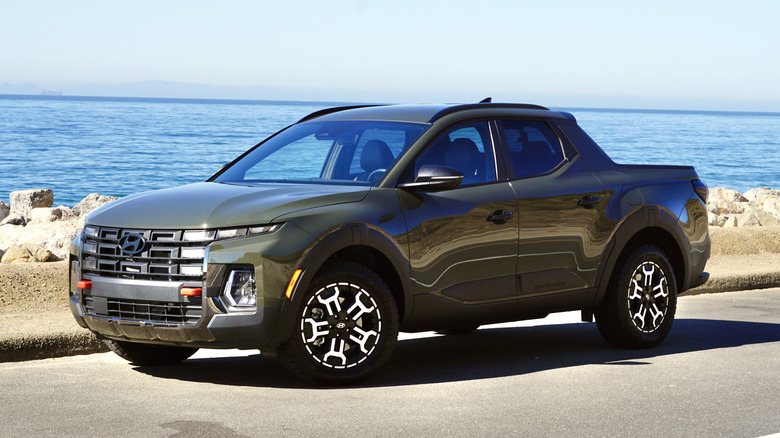Unibody Vs. Body-On Frame: Which Is Better?
For most mass-market vehicles, there are two methods of construction: unibody and body-on-frame (there are also monocoque vehicles, but they're rarer and don't really apply here). These two distinct ways of building vehicles are generally meant for different classes of vehicles. Unibody construction is typically used on coupes, sedans, and small crossovers/SUVs. Using various combinations of metal stamping, welding, fasteners, and even glue, unibody vehicles essentially combine the body and the underlying floor of the vehicle into one piece. This kind of construction is typically used on vehicles that have fuel economy as a top priority, keeping weight down as part of the fuel-saving process.
Body-on-frame vehicles are a bit more robust. In the past, body-on-frame was one of the most common setups, but these days, big trucks and SUVs are where you can expect to see a body-on-frame setup. They generally offer stronger towing capability, and there are benefits when it comes to off-roading, too. Body-on-frame vehicles have a strong underpinning (the frame) that the body sits on top of. On-road and off-road, unibody and body-on-frame setups each have their own benefits and drawbacks. Between the two, which is better for your needs?
Body-on frame toughness
All of the biggest and baddest heavy-duty pickup trucks, like the Ford Super Duty and the Silverado HD, have body-on-frame setups. Want an HD rig that can tow a large fifth-wheel or your big boat on summer vacation? It's going to be body-on-frame for you. Full-size pickup trucks like the Ford F-150, Chevrolet Silverado 1500, and Ram 1500 all use body-on-frame construction to achieve their impressive towing and hauling capabilities. A large payload in the bed of your truck generally requires the strength of a body-on-frame pickup for proper transport. It's not just trucks either – SUVs are invited to this party, too.
While most family-friendly SUVs use unibody construction these days, the toughest SUVs still use body-on-frame setups. SUVs like the Ford Bronco, Jeep Wrangler, and Toyota 4Runner are all hailed as veritable kings of off-roading due in part to their body-on-frame construction. Body-on-frame construction takes abuse much better when there is twisting action involved. A scenario where this is likely to occur is off-road during heavy articulation. Want to maintain traction while you go over that big rock? A body-on-frame SUV is probably better suited for the task than something with a unibody. Want a big suspension lift or heavy-duty shocks? Body-on-frame is your best bet. If you've got big towing or hauling needs, or if you spend a lot of time crawling over off-road obstacles, a body-on-frame setup will serve you best.
The case for a unibody
Unibody vehicles are typically lighter than body-on-frame vehicles. Without heavy-duty construction to build on, only the panels and floorboards are weighing them down. Lighter unibody vehicles tend to offer better fuel economy, but they also tend to offer lower towing capacity, less off-road capability, and lower payload maximums.
There are some specific cases where unibody and body-on-frame vehicles compete. Small-to-midsize pickup trucks are a great example of this crossover. The Ford Maverick, Honda Ridgeline, and Hyundai Santa Cruz all offer pickup truck configurations on unibody underpinnings. As a result, they can generally tow and haul less than rivals like the Chevrolet Colorado, Toyota Tacoma, and Nissan Frontier. Ride quality in those body-on-frame trucks though, can be a bit rough compared to the unibody rigs. The Hyundai Santa Cruz, for example, has a quiet and comfortable highway ride, especially when you compare it to off-road focused trims of trucks like the Chevy Colorado. From the driver's seat, vehicles like the Santa Cruz feel more like an everyday family SUV – but out back, there's plenty of space for your gear.
Having driven and tested hundreds of cars, trucks, and SUVs over the years, I've had the opportunity to get behind the wheel of some of the most capable vehicles on the planet. Many of them had body-on-frame setups that were extremely capable, but don't discount the latest off-road versions of unibody trucks and SUVs – they might surprise you.


